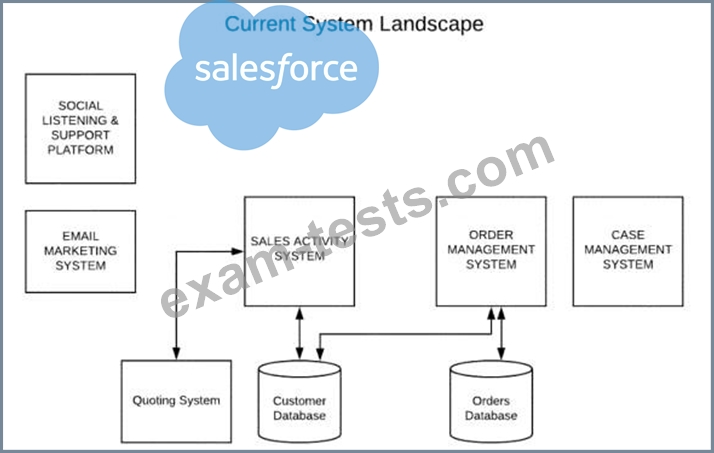Question 1
Universal Containers (UC) is currently managing a custom monolithic web service that runs on an on-premise server.
This monolithic web service is responsible for Point-to-Point (P2P) integrations between:
1. Salesforce and a legacy billing application
2. Salesforce and a cloud-based Enterprise Resource Planning application
3. Salesforce and a data lake.
UC has found that the tight interdependencies between systems is causing integrations to fail.
What should an architect recommend to decouple the systems and improve performance of the integrations?
This monolithic web service is responsible for Point-to-Point (P2P) integrations between:
1. Salesforce and a legacy billing application
2. Salesforce and a cloud-based Enterprise Resource Planning application
3. Salesforce and a data lake.
UC has found that the tight interdependencies between systems is causing integrations to fail.
What should an architect recommend to decouple the systems and improve performance of the integrations?
Question 2
What are three capabilities of Salesforce Lightning Connect?
Choose 3 answers.
Choose 3 answers.
Question 3
A large B2C customer is planning to implement Salesforce CRM to become a Customer centric enterprise.
Below, is their current system landscape diagram.

The goals for implementing Salesforce follows:
1. Develop a 360 view of customer
2. Leverage Salesforce capabilities for Marketing, Sales and Service processes
3. Reuse Enterprise capabilities built for Quoting and Order Management processes Which three systems from the current system landscape can be retired with the implementation of Salesforce?
Choose 3 answers
Below, is their current system landscape diagram.

The goals for implementing Salesforce follows:
1. Develop a 360 view of customer
2. Leverage Salesforce capabilities for Marketing, Sales and Service processes
3. Reuse Enterprise capabilities built for Quoting and Order Management processes Which three systems from the current system landscape can be retired with the implementation of Salesforce?
Choose 3 answers
Question 4
Universal Containers (UC) has integrations developed between Salesforce and back-end ERP applications.
During peak load, UC is getting an error at the integration layer indicating, "Login Rate Exceeded".
Which two recommendations would mitigate this issue?
During peak load, UC is getting an error at the integration layer indicating, "Login Rate Exceeded".
Which two recommendations would mitigate this issue?
Question 5
Universal Containers decided to use Salesforce Sales Cloud for their sales processes. Won Opportuinities must be sent to an external source for Order fulfillment. All lint items must also be sent, along with opportunities.
The ERP system has SOAP based web services orders. UC chose to use Apex callouts.
Which two design trade-offs must be taken into account when using Apex callouts to SOAP base web services?
Choose 2 answers
The ERP system has SOAP based web services orders. UC chose to use Apex callouts.
Which two design trade-offs must be taken into account when using Apex callouts to SOAP base web services?
Choose 2 answers

